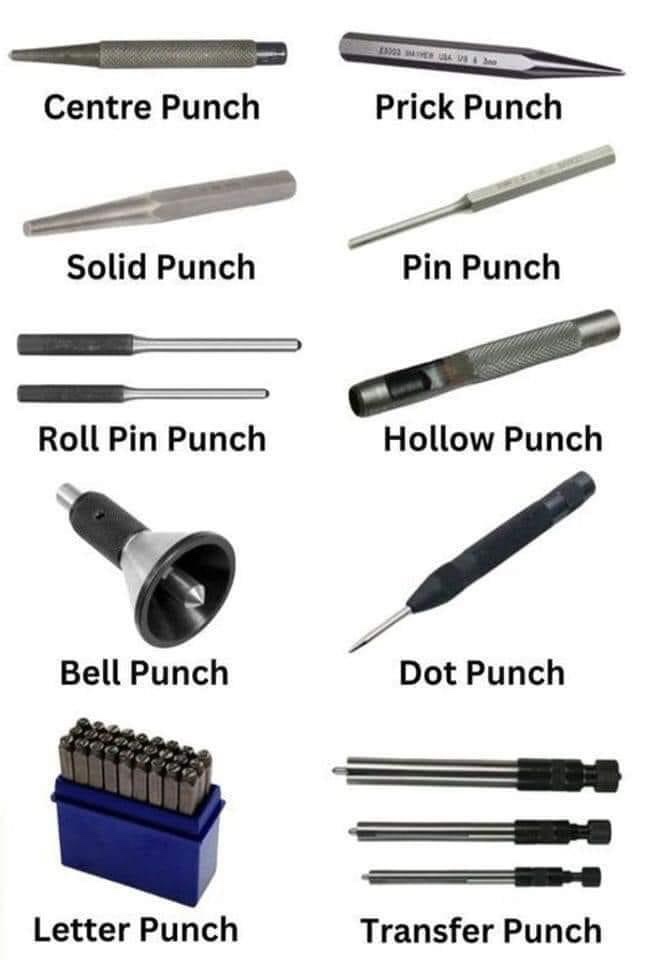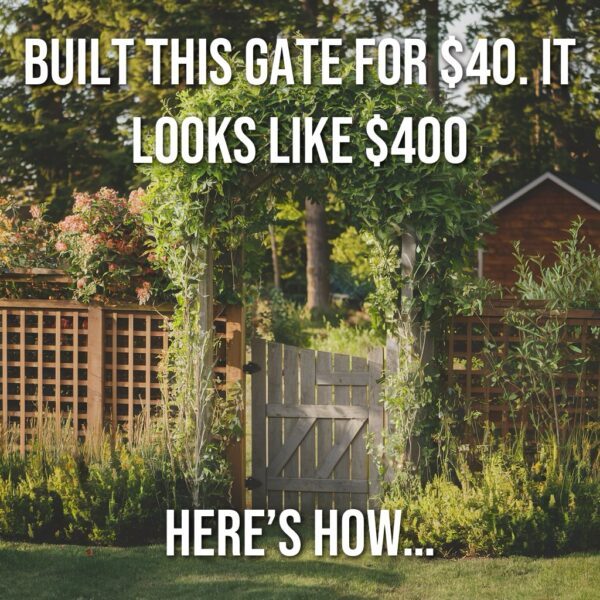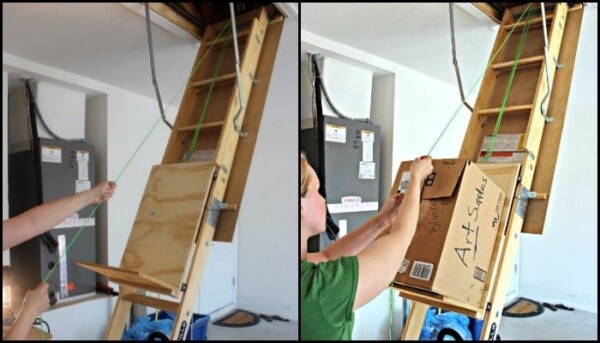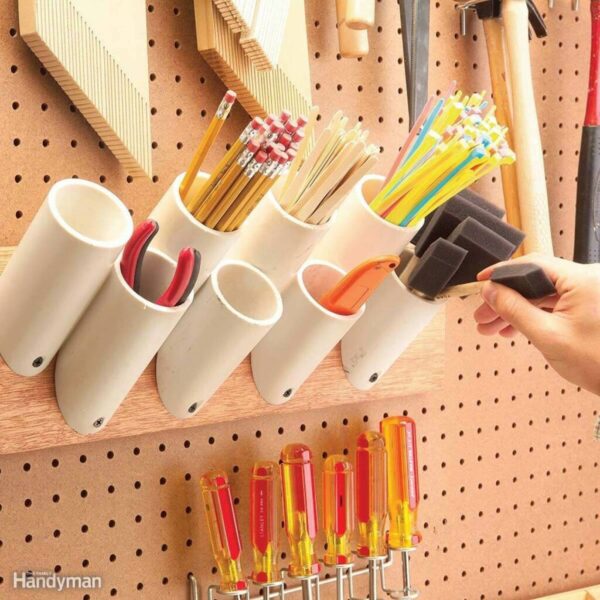
Understanding Different Types of Punches for DIY Projects
If you’re a hands-on homeowner or a weekend DIY warrior, knowing your way around different types of punches can seriously level up your toolkit. These small but mighty tools are essential for marking, shaping, or driving objects—especially when you’re dealing with wood, metal, leather, or even plastic.
Let’s break down the most common and useful punch tools every DIYer should know about.
Center Punch
The center punch is a go-to tool when you need to drill accurately. It helps keep your drill bit from slipping around on hard surfaces like metal or hardwood. By creating a small dimple exactly where you want to drill, you guide the bit from the start.
Some center punches are automatic and don’t require a hammer—just press it down, and it springs into action.
Pin Punch
A pin punch is designed to drive out solid pins from mechanical parts, hinges, or frames. It has a flat tip and comes in different sizes depending on the diameter of the pin. These are great for tasks like:
- Removing hinge pins
- Disassembling small engine parts
- Fixing door hardware or tools
Always match the punch size to the pin to avoid bending it.
Taper Punch (Aligning Punch)
Taper punches, also known as aligning punches, are perfect when you’re trying to line up two pieces with bolt holes that aren’t quite cooperating. The tapered shaft helps gently align them so you can insert bolts or pins easily.
You don’t hammer these like crazy—instead, you guide and adjust until everything lines up.
Drift Punch
Also called a drift pin, the drift punch is more about moving or enlarging holes than precision marking. It’s super helpful in metal fabrication or when you’re trying to tap something loose, like a stuck bolt.
These aren’t for driving out pins—they’re made for forceful pushing or alignment in tougher materials.
Transfer Punch
Need to make a copy of a hole pattern exactly where it belongs? A transfer punch lets you mark the precise center of a hole from one piece onto another, which is essential for custom brackets or parts.
It saves you from mismatched holes and misaligned parts—because guessing doesn’t cut it in precision work.
Prick Punch
If you’re doing layout work in metal, a prick punch gives you a sharper, more defined indentation than a center punch. It’s mostly used before the center punch step to create ultra-precise guides for layout lines.
It’s more of a scribing tool than a force tool—great for planning, not driving.
Roll Pin Punch
A roll pin punch looks like a pin punch but has a tiny raised nipple on the tip that fits into the hollow center of a roll pin (aka spring pin). This feature keeps it from slipping or crushing the pin as you drive it out.
A must-have in:
- Gunsmithing
- Bicycle repair
- Engine maintenance
Leather Punch
A leather punch, also called a rotary punch, works just like a hole punch for paper—but for tougher stuff like leather, vinyl, or canvas. You spin the wheel to choose the size hole you want, squeeze the handles, and it punches right through.
Perfect for:
- Fixing belt holes
- Adjusting straps
- Crafting with soft materials
Hollow Punch
This is your go-to tool when you need a clean, round hole in things like gaskets, foam, or leather. A hollow punch removes a small circle of material completely—leaving a smooth finish behind.
Just place it, strike with a hammer, and out pops a perfect hole.
Chassis Punch (Knockout Punch)
A chassis punch—or knockout punch—is made for cutting out large round holes in sheet metal. It’s a favorite of electricians for installing conduit or wiring boxes into panels.
It uses pressure, not brute force, to cut a clean hole. Just insert the bolt, tighten it with a wrench, and the die slices right through the metal.
Nail Set Punch
When working on trim or finish carpentry, a nail set punch lets you drive nail heads below the surface of wood without damaging the surrounding area. After that, you can cover the hole with putty or filler.
These are especially useful for:
- Baseboards
- Window or door trim
- Furniture building
Decorative or Stamping Punch
These fun little punches are used in crafts and customization. Stamping punches can leave behind letters, numbers, or even fancy designs on leather, metal, or wood.
They’re used for:
- Personalizing leather wallets or belts
- Metal jewelry stamping
- Creating serial numbers or custom ID tags
If you’re building your toolbox or just looking to learn more about what punch does what, this guide should keep you from getting “punch drunk” trying to figure it out. 😄
👉 Want more smart DIY know-how? Check out this genius way to 💥ditch extension cords with underground pool wiring💥 or see how a 🌳wooden arbor can totally change your front yard’s look🌳—great projects to pair with your growing toolkit!
Scratch Awl – The Underrated Layout Tool
While not technically a punch, a scratch awl often gets lumped in with punches because of how similar it looks and feels. But instead of striking it with a hammer, you use it like a pen to score surfaces—especially wood or soft metals.
It’s perfect for marking layout lines, guiding saws, or even starting screw holes. If you’re building furniture or crafting with wood, having a good scratch awl is a total game-changer.
Brass Punch – The Non-Marring Option
When you need to apply force without damaging delicate surfaces, reach for a brass punch. These are softer than steel punches, so they deform before your workpiece does. Ideal for working with:
- Guns or firearms
- Precision equipment
- Metal parts with fine finishes
Because brass punches absorb impact, they’re great for tasks where steel would cause scuffs or chips.
Drive Pin Punch vs. Pin Punch – What’s the Difference?
This one’s a common mix-up. While they might look similar, a drive pin punch is made to follow a pin all the way through a hole, while a standard pin punch is better for finishing a job that’s already in progress.
Drive pin punches are typically longer and allow you to push the pin all the way out cleanly. If you’re taking apart hinges, mechanical tools, or gearboxes, having both types can prevent frustration and broken tools.
Punch Set Materials – What They’re Made Of (and Why It Matters)
Not all punches are created equal. Tool steel is the most common, but there’s more to the story:
- Hardened Steel: Best for everyday use—tough and long-lasting.
- Brass: Soft and gentle for delicate jobs.
- Aluminum or Nylon-Tip Punches: Rare but useful in ultra-soft or scratch-sensitive environments.
Always pick the right punch material for the job to avoid damaging both your tools and your project.
Using Punches Safely – Quick Tips to Avoid Accidents
Punches might be small, but they’re not harmless. Misuse can lead to bent tools, busted knuckles, or worse. Here’s how to stay safe:
- Always use a properly weighted hammer for the type of punch you’re using.
- Wear safety glasses—even a chipped punch can send sharp metal flying.
- Make sure your punch is squarely aligned before striking. A tilted punch can slip or shatter.
- Inspect punches for wear or mushrooming at the tip—these need to be ground down or replaced.
- Keep your hands and fingers away from the impact zone at all times.
For bigger, outdoor projects, make sure to pair your tools with smart planning—like knowing where utilities are buried. You don’t want to drive a punch or stake right into a water or electrical line. Need help with that? Check out ⚠️this guide on utility color codes⚠️ before you dig.
As an Amazon Associate we earn from qualifying purchases through some links in our articles.



